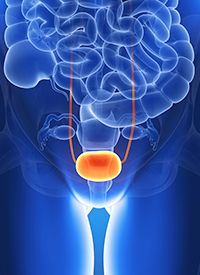Article
UGN-102 Elicits Durable Responses in Low-Grade Intermediate-Risk Non-Muscle Invasive Bladder Cancer
Author(s):
November 17, 2020 - Primary chemoablation with UGN-102 was found to induce durable responses in patients with low-grade, intermediate-risk non-muscle invasive bladder cancer.

November 17, 2020 - Primary chemoablation with UGN-102 was found to induce durable responses in patients with low-grade, intermediate-risk non-muscle invasive bladder cancer, according to final topline data from the phase 2b OPTIMA II trial (NCT03107182).1
As previously reported during the 2020 American Urological Association Annual Meeting, 65% of patients (n = 41/63) experienced a complete response (CR) just 3 months following treatment initiation. In this patient subgroup, the duration of response (DOR) reported at 9 months, which is 12 months from the start of treatment, was estimated to be 72.5% by Kaplan-Meier analysis. The median DOR had not yet been reached.
Moreover, the agent was found to be well tolerated and the toxicity profile proved to be consistent with data that had previously been reported. Most of the adverse effects experienced in patients included dysuria, urinary frequency, hematuria, urinary urgency, urinary tract infection, and fatigue. No serious toxicities associated with treatment were experienced.
“The current approach to treating patients diagnosed with low-grade intermediate-risk non-muscle invasive bladder cancer is surgery. In most cases, the cancer comes back, and repetitive surgical intervention is required. This puts a tremendous burden on patients and their families and can even be life-threatening,” Andrea Maddox-Smith, chief executive officer of the Bladder Cancer Advocacy Network, stated in a press release. “Being able to provide patients with an alternative, non-surgical treatment option that is effective, well-tolerated, and durable, would greatly benefit those in the patient community.”
In the prospective, single-arm, open-label OPTIMA trial, investigators examined the safety and efficacy of UGN-102 for primary chemoablation in patients with low-grade, intermediate-risk, non-muscle invasive bladder cancer as a nonsurgical alternative to transurethral resection of the bladder and intravesical therapy, which is the current standard of care.
To be eligible for enrollment, patients had to have intermediate-risk disease, which was defined as having several tumors, a solitary tumor that was greater than 3 cm, and/or at least 1 occurrence within 1 year of diagnosis. Those with negative voiding cytology for high-grade disease were permitted for inclusion.
Patients with a history of carcinoma in situ in the previous 5 years, high-grade papillary urothelial carcinoma in the previous 2 years, or bacillus Calmette-Guerin treatment for urothelial disease within the past 2 years, were excluded. If they had previous or current muscle-invasive or metastatic urothelial carcinoma or simultaneous upper-tract urothelial disease, they were not allowed to participate.
Sixty-three patients received treatment with 6 instillations of UGN-102 on a weekly basis. After 3 months of treatment, patients were examined for response. The mean age of the participants enrolled to the study was 70.5 years, and the majority were men (60%). Moreover, 98% of participants had noninvasive papillary carcinoma and 82% had several tumors.
At visits held 6 months, 9 months, and 12 months, patients were followed to establish durability of response to treatment. The secondary end point of the trial was safety.
Results from the interim analysis showed that among a total of 36 response-evaluable patients, 35 maintained their response to UGN-102 at 6 months (97.2%, 95% CI, 85.5%-99.9%).2,3 At the 9-month mark, 24 of 28 evaluable patients were still in CR (85.7%; 95% CI, 67.3%-96.0%). Moreover, at 1 year, 11 of 13 evaluable patients had durable CRs (84.6%; 95% CI, 54.6%-98.1%).
“We are extremely encouraged by the OPTIMA II data and believe UGN-102 has the potential to provide a safe, durable, outpatient treatment alternative for low-grade, intermediate-risk non-muscle invasive bladder cancer,” Mark Schoenberg, MD, chief medical officer of UroGen, added in the release. “We look forward to the expected initiation of our phase 3 trial this year and further exploring the potential of our innovative technology in advancing new treatments for specialty cancers and urologic diseases.”
In April 2020, the FDA approved mitomycin gel (UGN-101; Jelmyto) as the first treatment for patients with low-grade upper-tract urothelial carcinoma based on data from the phase 3 OLYMPUS trial, which showed that this approach resulted in 58% CR rate in this population.4
References
- Complete and durable responses observed in OPTIMA II phase 2b final results for UGN-102 in patients with low-grade intermediate risk non-muscle invasive bladder cancer. News release. UroGen Pharma Ltd. News release. November 17, 2020. Accessed November 17, 2020. https://bit.ly/38Zenj4.
- Huang W, Chevli K, Trainer A, et al. Can TURBT be avoided? primary chemoablation with a reverse thermal gel containing mitomycin (UGN-102) in patients with low grade intermediate risk non-muscle invasive bladder cancer. J Urol. 2020;203(suppl 4):LBA02-03. doi:10.1097/JU.0000000000000958.03
- UroGen Pharma announces first presentation of data from phase 2b study of UGN-102 in patients with difficult to treat type of bladder cancer. News release. UroGen PharmaLtd. May 15, 2020. Accessed November 17, 2020. https://bwnews.pr/2Z87qYm.
- FDA approves first therapy for treatment of low-grade upper tract urothelial cancer. April 15, 2020. Accessed November 17, 2020. https://bit.ly/2wGE4Es.









